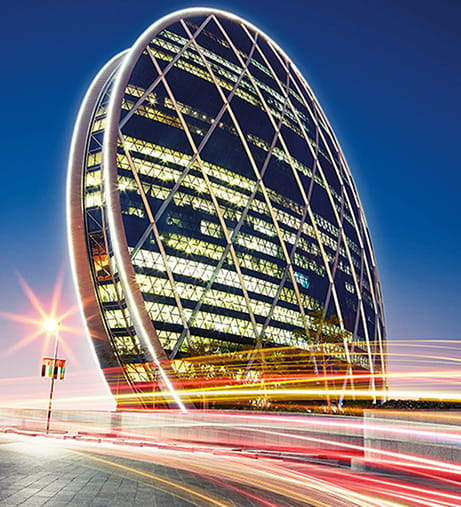#Featured
March 11, 2025
Uncover Benefits of Real Estate Projects in Green Spaces
Real estate projects built in natural green spaces offer many benefits for residents. These areas provide clean air, quiet surroundings, and better health outcomes. Living near nature has been linked to lower stress levels and improved quality of life.
As urban areas grow, access to green spaces is becoming more valuable. Real estate projects that include parks, trees, and gardens are in high demand. They also hold their value better over time. For many, choosing a home in a green environment is not just a lifestyle choice; it’s a long-term investment.
Health and Wellness Benefits of Green Living
Many residents are choosing real estate projects that offer direct access to nature. Living near green spaces has been linked to reduced stress, better sleep, and improved long-term health.
Natural environments promote regular outdoor activity, cleaner air, and a more balanced lifestyle. These benefits are especially important in fast-paced urban environments, where time in nature helps counter the physical and mental effects of daily stress.
Stress Reduction and Mental Clarity Through Nature
Natural settings provide relief from the sensory overload of urban life. People who live near trees, gardens, or parks often report better emotional balance and lower anxiety.
- Exposure to greenery has been shown to reduce cortisol levels and improve focus.
- Quiet surroundings help lower heart rate and support relaxation.
- Nature-based routines, such as walking or gardening, promote mindfulness and better mood.
- Visual access to green areas has a calming effect, even when indoors.
- Time spent outdoors supports mental clarity and better sleep patterns.
Better Physical Health from Outdoor Activity Access
Green environments encourage regular movement and physical activity. This has a direct impact on physical health and long-term well-being.
- Walking trails and bike paths promote daily exercise and outdoor time.
- Community parks and open areas provide safe places for movement across age groups.
- Lower pollution levels reduce the risk of respiratory issues during activity.
- Natural terrain adds variety and low-impact resistance for cardiovascular health.
- Outdoor recreation options help build healthy routines for families and individuals.
Cleaner Air and Sunlight for a Healthier Home
Natural spaces provide environmental conditions that are good for health. Homes in greener areas often enjoy better air and light quality.
- Tree cover helps filter pollutants and improve air quality.
- Ample sunlight supports vitamin D production and better mood.
- Natural airflow is improved by low building density and open landscapes.
- Cooler microclimates created by vegetation reduce heat and humidity indoors.
- Lower exposure to noise and toxins improves sleep and respiratory health.
How Nature Boosts Property Value and Appeal
Well-planned real estate projects in natural surroundings often enjoy higher demand and stronger market performance. Buyers are drawn to homes that offer both lifestyle and financial benefits. The presence of green space improves liveability and long-term value, making these homes more attractive in both growing and mature markets.
Scenic Views as a Premium Selling Point
Properties with direct views of nature often command higher prices. These visual connections to green space add value beyond square footage.
- Views of trees, lakes, or parks offer daily psychological benefits.
- Balconies and large windows help connect indoor and outdoor experiences.
- Sunrise and sunset visibility increases emotional appeal and comfort.
- Privacy buffers created by green surroundings are highly desirable.
- Resale value increases when homes face natural landscapes.
Demand for Homes Near Green Belts and Parks
Proximity to parks and protected green areas is a major draw for homebuyers. These locations offer practical and emotional value.
- Families prefer access to safe, open spaces for children.
- Pet owners value walkable green areas near home.
- Commuters enjoy quiet neighbourhoods with good air and low traffic.
- Active residents use nearby parks for fitness and recreation.
- Market trends show consistent interest in homes near green zones.
Enhanced Liveability and Quality of Life
Living in a green-focused setting supports a more balanced, enjoyable lifestyle. These environments provide comfort, safety, and space to thrive.
- Natural light and air create healthier living conditions indoors.
- Noise levels are lower due to vegetation and distance from traffic.
- Community interaction is stronger in shared outdoor spaces.
- an>Biodiversity enhances the sense of place and connection to the environment.
- Slower-paced surroundings encourage mindful, intentional living.
Community Features in Eco-Focused Real Estate Projects
Many real estate projects are now designed with shared green amenities that support both environmental and social well-being. These features give residents more than just a home; they create access to healthier, more connected lifestyles.
Green spaces, walking paths, and shared gardens are becoming core elements in developments that value sustainability and quality of life. These spaces also improve mental health and encourage regular outdoor activity.
Nature Trails, Playgrounds, and Open Green Areas
Open outdoor spaces make a community feel more active, healthy, and welcoming. They also support day-to-day well-being.
- Walking and cycling trails promote exercise and safe mobility.
- Playgrounds and play areas offer natural settings for children to explore.
- Open lawns and shaded zones provide space for rest and gathering.
- Native landscaping reduces water use and supports local wildlife.
- Flexible outdoor zones can be used for fitness, events, or quiet time.
Shared Gardens and Eco-Friendly Facilities
Shared green spaces offer both social and environmental benefits. Residents use these areas to grow food, relax, and connect.
- Community gardens support local food production and healthy eating.
- Composting stations reduce waste and improve soil quality.
- Recycled materials are often used in seating, shade structures, and fencing.
- Natural play areas combine recreation with education about nature.
- Rainwater collection systems provide water for landscaping and garden use.
Rooftop Forests and Urban Farming Innovations
Real estate projects in dense urban areas are making use of rooftops for greenery and food production. These spaces improve air quality, lower heat levels, and provide functional outdoor areas.
- Rooftop forests reduce urban heat and create habitat for birds and insects.
- Green roofs act as insulation and manage stormwater runoff.
- Raised garden beds support vegetable and herb growing for residents.
- Solar panels and green systems can be combined for energy and food.
- Community farming initiatives turn rooftops into productive shared spaces.
Future Trends in Nature-Integrated Housing
Future-ready real estate projects are designed with nature in mind from the very beginning. This approach supports environmental goals and improves the experience of living in the space. As demand grows, more developers are building for long-term ecological and social value. Nature integration is no longer a feature; it is becoming a standard.
Living Walls and Vertical Greenery
Vertical greenery is gaining attention for its ability to save space and improve indoor environments. These systems are useful in both high-rise buildings and compact housing.
- Living walls improve air quality and act as natural insulation.
- Climbing plants provide shade and reduce direct sun exposure.
- Balcony planters bring greenery to individual units and shared facades.
- Low-maintenance systems make upkeep easier for residents.
- Visual appeal enhances both interior and exterior design.
Modular Green Architecture and Eco Pods
Compact green structures are changing the way people think about space and sustainability. These real estate projects focus on flexibility, lower impact, and efficient use of materials.
- Prefabricated green units reduce waste during construction.
- Eco pods are self-contained, with built-in energy and water systems.
- Modular layouts allow homes to grow with a family’s needs.
- Efficient climate control is built into the structure design.
- Off-grid capabilities make these homes ideal for rural or nature-sensitive areas.
-
Choose The Wilds for a community that values green design, biodiversity, and human wellness. It's more than just a place to live, it’s a commitment to low-impact, high-quality living.

